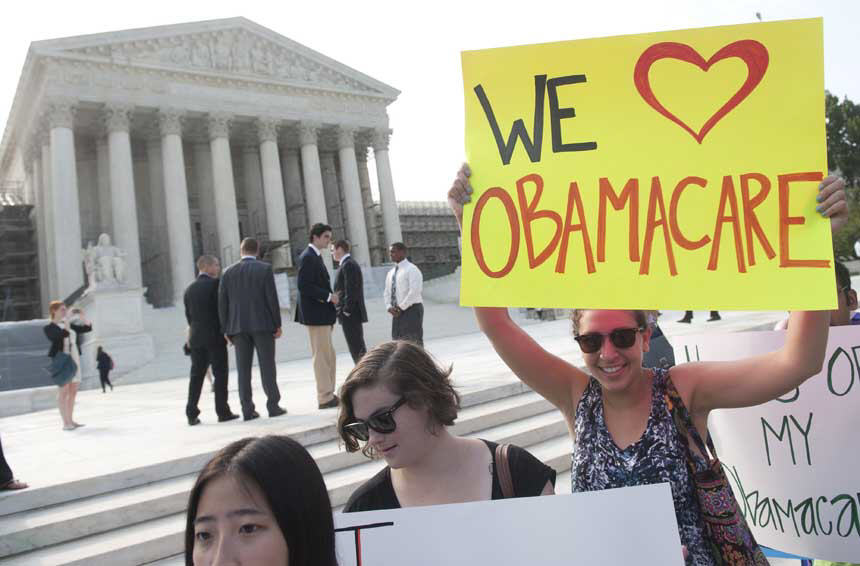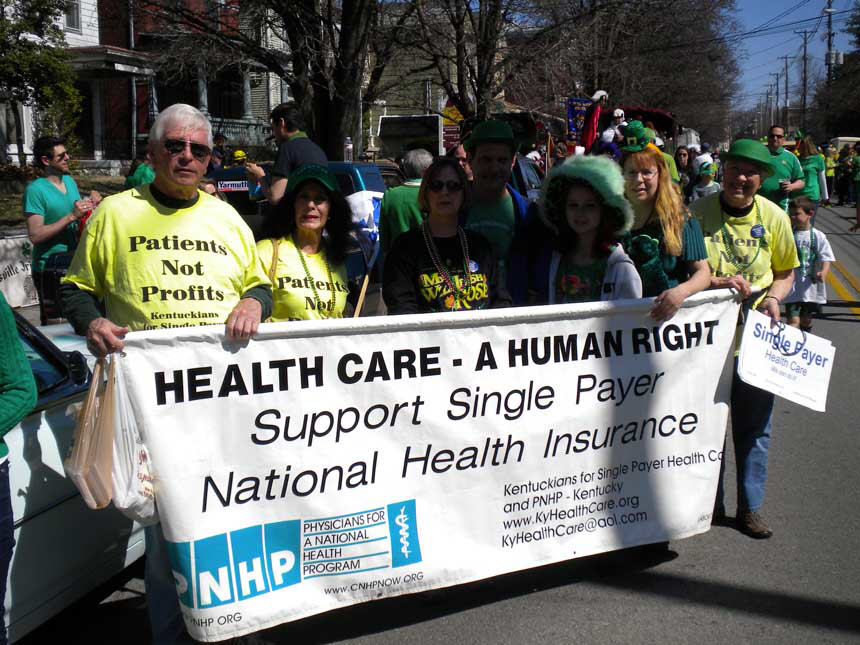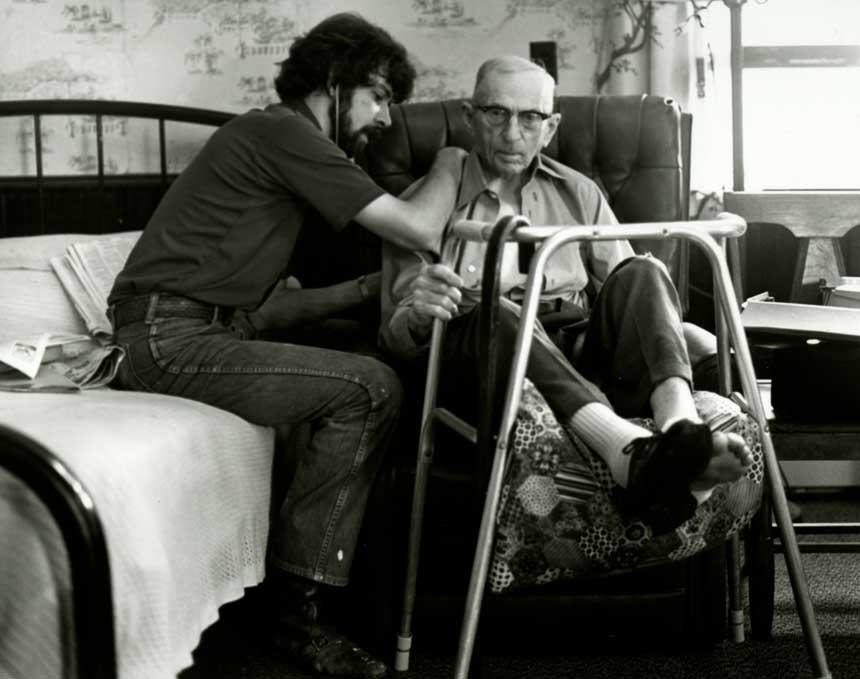The participation of grassroots groups in battles over health care reform continues in 21st century.
Activism helped shape the Affordable Care Act of 2010, which outlawed most types of insurance discrimination and extended health coverage to many of the uninsured. Citizens’ groups faced off at town meetings during the battle over “Obamacare,” and are playing a major role in the debate over the constitutionality and implementation of the law.
New types of citizen action have also emerged to address new health care challenges, from illness and disability among military veterans to the rising number of elderly in the United States.
-
In front of the Supreme Court, demonstrators await a decision on the Affordable Care Act, June 28, 2012
Courtesy Saul Loeb/AFP/Getty Images
Citizens voiced both support for and opposition to the Affordable Care Act of 2010 (“Obamacare,”), the most sweeping health reform in the nation’s history.
Kentuckians for Single Payer Health Care march in Louisville’s St. Patrick’s Day Parade, 2014
Courtesy Kay Tillow
Some believe that the Affordable Care Act does not go far enough because it does not replace for-profit insurance or provide universal coverage. Groups supporting a “single-payer” system argue for the extension of public health care coverage to all.
-
A Public Health Service physician examines an elderly patient in a home setting, ca. late 20th century
Courtesy National Library of Medicine
The United States confronts problems of accessibility and quality of health care for military veterans, the disabled, and the elderly. Citizen groups continue to demand our attention to these challenges.





